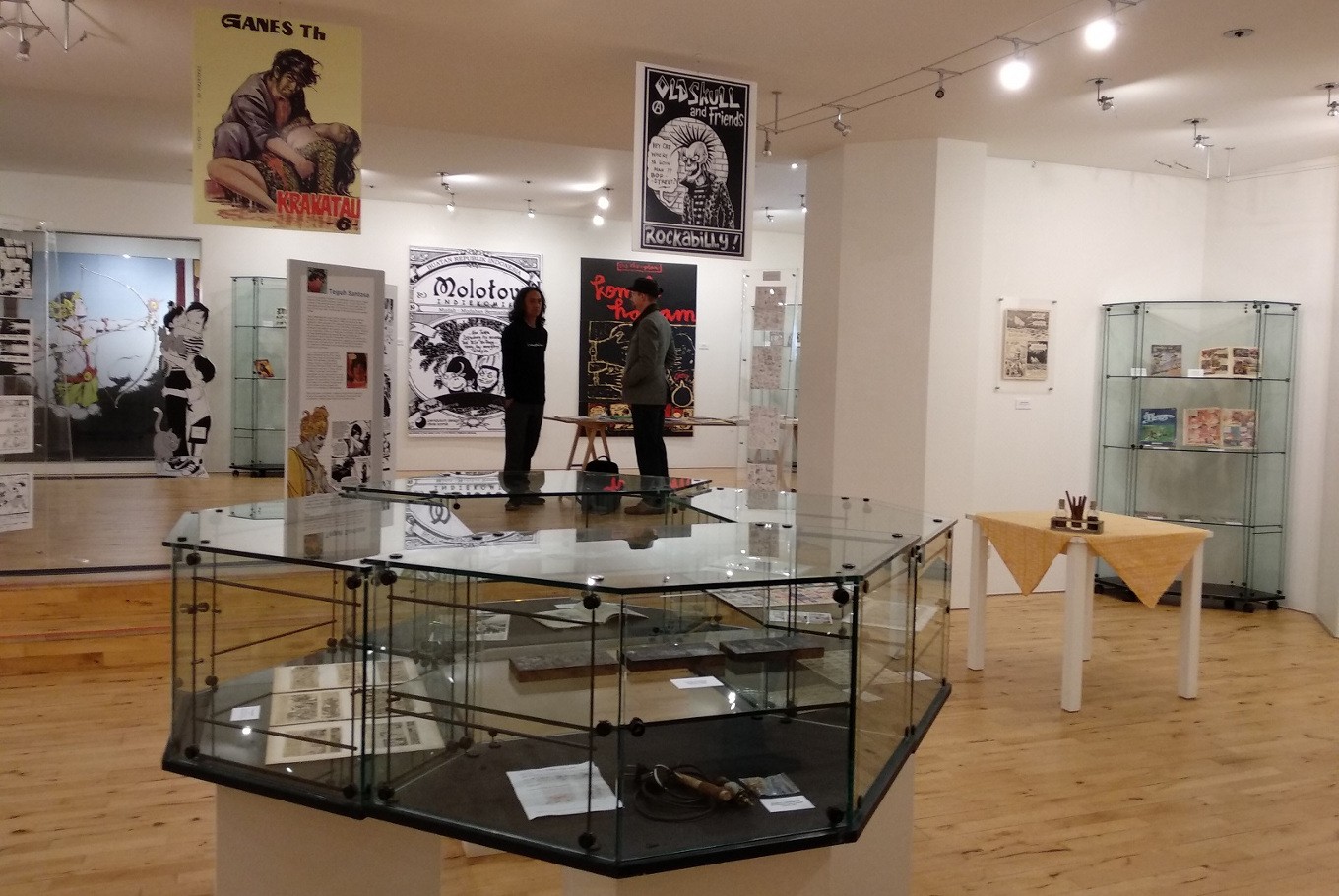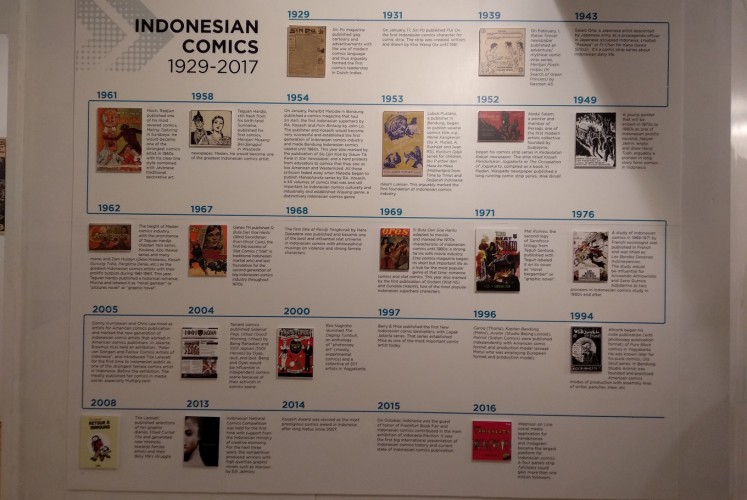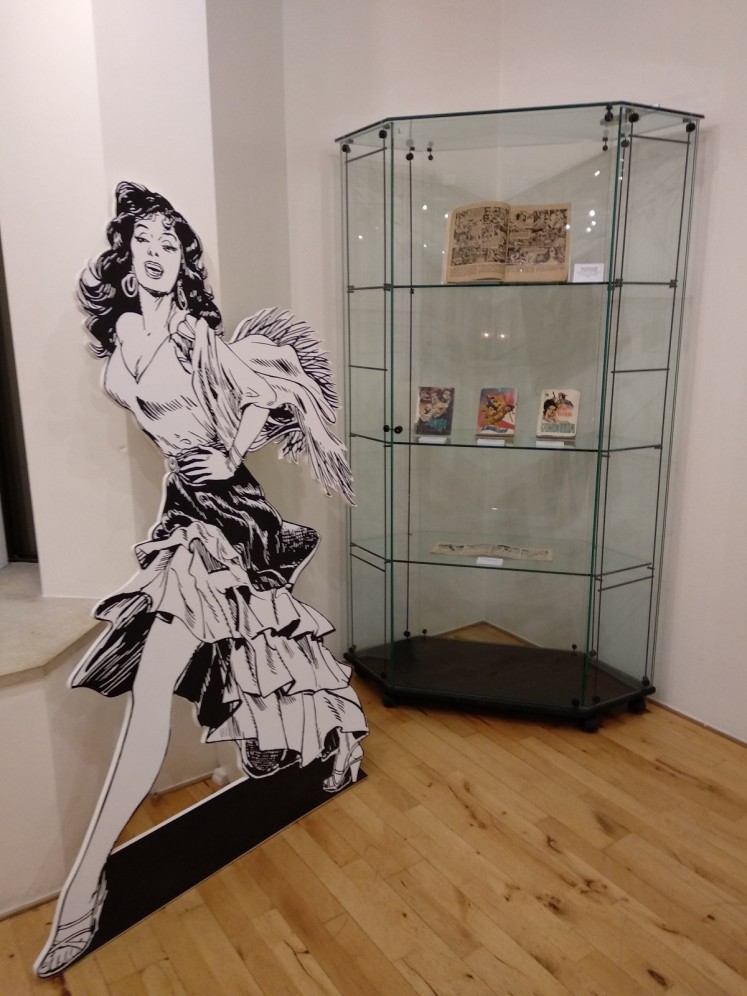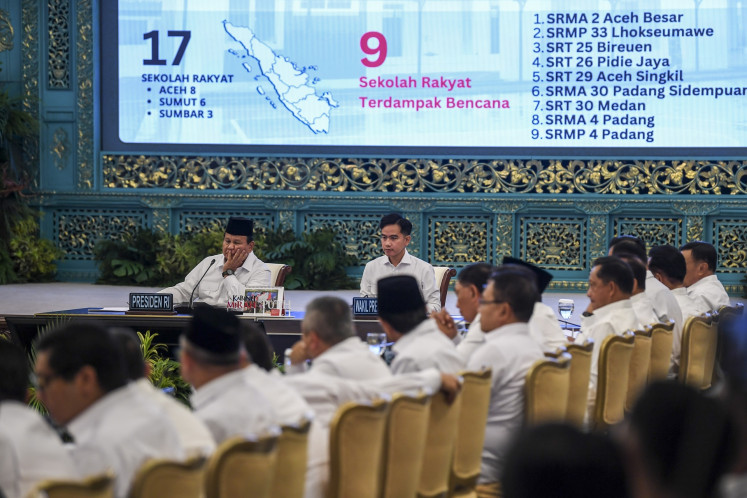Popular Reads
Top Results
Can't find what you're looking for?
View all search resultsPopular Reads
Top Results
Can't find what you're looking for?
View all search resultsFirst exhibition for Indonesian comics history held in Brussels
Change text size
Gift Premium Articles
to Anyone
M
ore than 100 items are on display at the “Equatorial Imagination” exhibition, which highlights the history of Indonesian comics from 1929 to 2016.
The exhibition, which is part of Europalia Arts Festival Indonesia, officially opened on Tuesday at Bibliotheca Wittockiana, Brussels, Belgium, and is open to the public until Jan. 28 next year. It aims to introduce Indonesian comics to the world, open the door to new markets and make comics a tool of cultural diplomacy.
The chronological history of Indonesian comics from 1929 to 2016 is on display at the "Equatorial Imagination" exhibition, officially opened on Nov. 21 at Bibliotheca Wittockiana in Brussels, Belgium. (JP/Keshie Hernitaningtyas)“[This exhibition in] Europalia is a development of [our involvement] in the 2015 Frankfurt Book Fair as we received a lot of attention, especially from Belgium, which is home to a comics museum. They were quite surprised with Indonesia’s comics industry,” said curator Hikmat Darmawan.
A comics expert and pop culture observer, Hikmat said it took the team, which includes writers Seno Gumira Ajidarma and Iwan Gunawan and production team member Adyaksa Daud, two to three years to collect and curate the pieces of history. “This is the first comprehensive presentation of Indonesian comics history.”
Read also: Indonesian writers share thoughts on Islamic diversity in Brussels
Among the items showcased at the exhibition are gag cartoons and advertisements published in 1929 in Sin Po magazine, which used modern comics language and “arguably formed the first comics readership in the Dutch-Indies;” painter Abdul Salam’s comic strip series “Kissah Pendudukan Jogjakarta” (The Occupation of Yogyakarta), which began in 1952 in newspaper Kedaulatan Rakjat; and 1967’s “Si Buta dari Goa Hantu” (The Blind Swordsman from Ghost Cave), published by Ganes TH, which was “the first big success of pencak silat martial art comics and laid the foundation for the second generation of the big Indonesian comics industry throughout the 1970s.
One of the artists, Sheila Rooswitha, who likes to tell stories of Jakartans’ urban lives, said some the items she presented in the exhibition are brand new. “This is a very interesting event since an exhibition on Indonesian comics history had never been made before, even in Indonesia,” she said.
The exhibit features old as well as brand new items. (JP/Keshie Hernitaningtyas)Sheila shared how her friends, who are comic artists in Europe, were very enthusiastic about the exhibition and were surprised to learn that Indonesia has quite a long history of comics. “They were especially interested in our diverse local content,” she said, adding that it would be more convenient if the comics were translated into other languages to gain more readers.
Meanwhile, Hikmat shared his own dream for the archipelago’s comics industry. “The important thing is how to create a comics culture [that is significant], since back then comics used to serve as a way to introduce the Indonesian language [to the people] in the beginning of independence,” he said. “Hopefully we can also have a comics museum in Indonesia and develop a better publishing infrastructure since the gap is quite large compared to other genres.” (asw)













